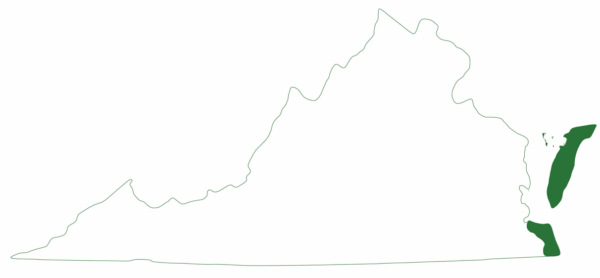U.S. National Park Service. Hawksbill sea turtle
Susanna Pershern, Submerged Resources Center. US National Park Service. Hawksbill hatchling release
Hawksbill sea turtle. Photo by Peter Richardson
Fact File
Scientific Name: Eretmochelys imbricata
Classification: Reptilia, Order Testudines, Family Cheloniidae
Conservation Status:
- Federally Endangered in the U.S.
Size: 3ft in length
Life Span: 50-60 years
Identifying Characteristics
The length of this species is 76-89 cm, with a weight from 43-75 kg. The coloration is brown with yellow or red spots on the carapace. The plastron is yellow, the postanal scales are yellow with black spots, the head is brown with yellow jaws and the flippers are brown on top, yellow below. The flippers have 2 claws, and the head is small with 2 pairs of prefrontal scales. Juveniles are black with the edge of the shell yellow. This species does not breed in Virginia waters.
Habitat
Hawksbill turtles are found in hard bottom habitats with rocky substrate, often the seek coral reefs containing vast numbers of sea sponges; but they can also be found in shoals and lagoons, typically they avoid water deeper then 60 feet and when they are young they are often easily found in floating aquatic mats such as sargassum. This species is rare in Virginia as it does not nest upon our shores.
Diet
This species consumes invertebrates, with the major food item the sea sponge, Geodia gibberosa. It also consumes jellyfish and marine plants preferring to eat in area that contain brown algae. This species feeds on the bottom and close to shore and closes its eyes when eating the Portuguese man-of-war (to avoid the tentacles), which makes it an easy catch for hunters.
Distribution:
They nest on sandy tropical beaches, and mating is just off shore from these. Migrations are poorly known but they probably nest at least twice during a given season at Tortuguero beach in Costa Rica then return to the foraging grounds. The clutch size is 150 to 160 eggs. Little other reliable data are available. This species will nest on small islets and isolated mainland shores. The female may clamber over reefs, rocks or rubble to nest among the roots of trees and bushes on the chosen beach. The incubation period is estimated to be 60 days and nesting occurs every 2 to 3 years, but more than once a season, at 2 week intervals

Did you know?
The Hawksbill sea turtle is the first recorded biofluorescent reptile! this is due to it’s diet of biofluorescent coral that allows these turtles to absorb light and emit it from their shells in a multitude of dilute colors.
Sources
First Observation of Fluorescence in Marine Turtles – Scientific Figure on ResearchGate. Available from: https://www.researchgate.net/figure/Fluorescent-hawksbill-sea-turtle-Eretmochelys-imbricata-imaged-on-coral-reef-at-20-m_fig3_286034867 [accessed 15 Aug, 2023]
Edelman, M. 2004. “Eretmochelys imbricata” (On-line), Animal Diversity Web. Accessed August 15, 2023 at https://animaldiversity.org/accounts/Eretmochelys_imbricata/
US National Park Service. Susanna Pershern, Submerged Resources Center. Turtle Release. https://npgallery.nps.gov/AssetDetail/94B7FA61-FC7F-A7DF-4026421A656F54B7
US National Park Service. Sea turtle, Dry Tortugas National Park, 2014. https://npgallery.nps.gov/AssetDetail/99d2e4c73ac641db883845dcd9e360bf
Updated 2023 : Mara Snyder
Last updated: July 18, 2024
The Virginia Department of Wildlife Resources Species Profile Database serves as a repository of information for Virginia’s fish and wildlife species. The database is managed and curated by the Wildlife Information and Environmental Services (WIES) program. Species profile data, distribution information, and photography is generated by the Virginia Department of Wildlife Resources, State and Federal agencies, Collection Permittees, and other trusted partners. This product is not suitable for legal, engineering, or surveying use. The Virginia Department of Wildlife Resources does not accept responsibility for any missing data, inaccuracies, or other errors which may exist. In accordance with the terms of service for this product, you agree to this disclaimer.

